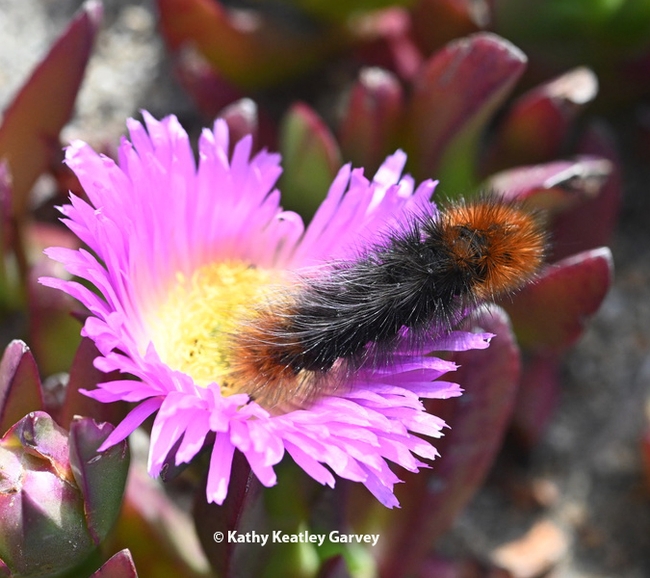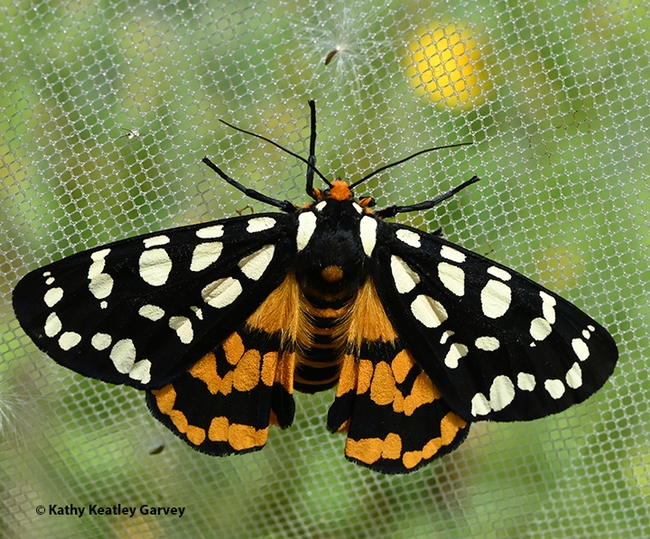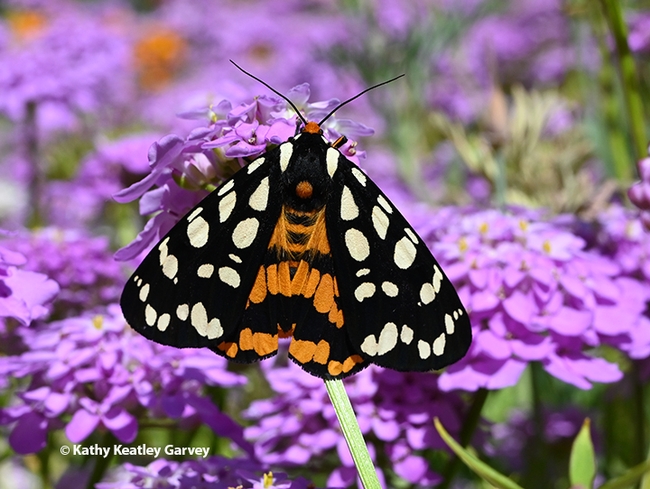Ever seen the wooly bear caterpillar, Arctia virginalis, formerly known as Platyprepia virginalis?
It's found in low elevations in western North America, from southern Monterey Bay, across Nevada and southern Utah to Colorado, and north to southern British Columbia.
We see it on spring and summer hikes on the trails of Bodega Head, Sonoma County, where it's often foraging on fiddleneck.
In its adult stages, it is commonly known as Ranchman's tiger moth, a diurnal or day-flying moth. French lepidopterist, botanist and physician, Jean Baptiste Alphonse Déchauffour de Boisduval (1799-1879) first described it in 1852.
This is the caterpillar that UC Davis distinguished professor Richard "Rick" Karban, a community ecologist, has studied for four decades. His research site is at the Bodega Marine Reserve, where he studies "the factors that control the abundance and spatial distribution of wooly bear caterpillars." Karban, who plans to retire this June, has published numerous papers on the wooly bear caterpillar. (Fred's Ecology and Environmental Tales commented on one paper dealing with climate change: "Karban and his students explored three hypotheses for why caterpillars increased following a year with numerous heavy rainfall events. First, perhaps more rain causes more plant growth and deeper litter, providing extra food for caterpillars. Second, heavy rains may reduce the number of predacious ground-nesting ants. Lastly, heavy rains may produce deeper denser litter providing refuge from predacious ants."
The Washington Post featured Karban's research in an article titled "These Fuzzy Little Caterpillars Are Better at Predicting Elections Than Most Pundits," published April 26, 2016.
Want to learn more about moths? Attend the Bohart Museum of Entomology open house on moths on Saturday night, July 20. Moth Night is from 7 to 11, with activities scheduled both inside and outside the museum. It's free and family friendly, Parking is also free on the weekends.
The Bohart Museum, part of the UC Davis Department of Entomology and Nematology, is located in Room 1124 of the Academic Surge Building, 455 Crocker Lane, UC Davis campus.
Director of the Bohart is Professor Jason Bond, the Evert and Marion Schlinger Endowed Chair, UC Davis Department of Entomology and Nematology, and associate dean, UC Davis College of Agricultural and Environmental Sciences. He is president-elect of the American Arachnological Society.
Attached Images:

A wooly bear caterpillar on ice plant at Bodega Head. This insect is Arctia virginalis, formerly known as Platyprepia virginalis. (Photo by Kathy Keatley Garvey)

In its adult stage, the wooly bear caterpillar is commonly known as Ranchman's tiger moth, Arctia virginalis. (Photo by Kathy Keatley Garvey)

A Ranchman's tiger moth, Arctia virginalis, in a bed of Globe Candytuft, Iberis umbellata, in a Vacaville garden. The plant is a member of the mustard family. (Photo by Kathy Keatley Garvey)